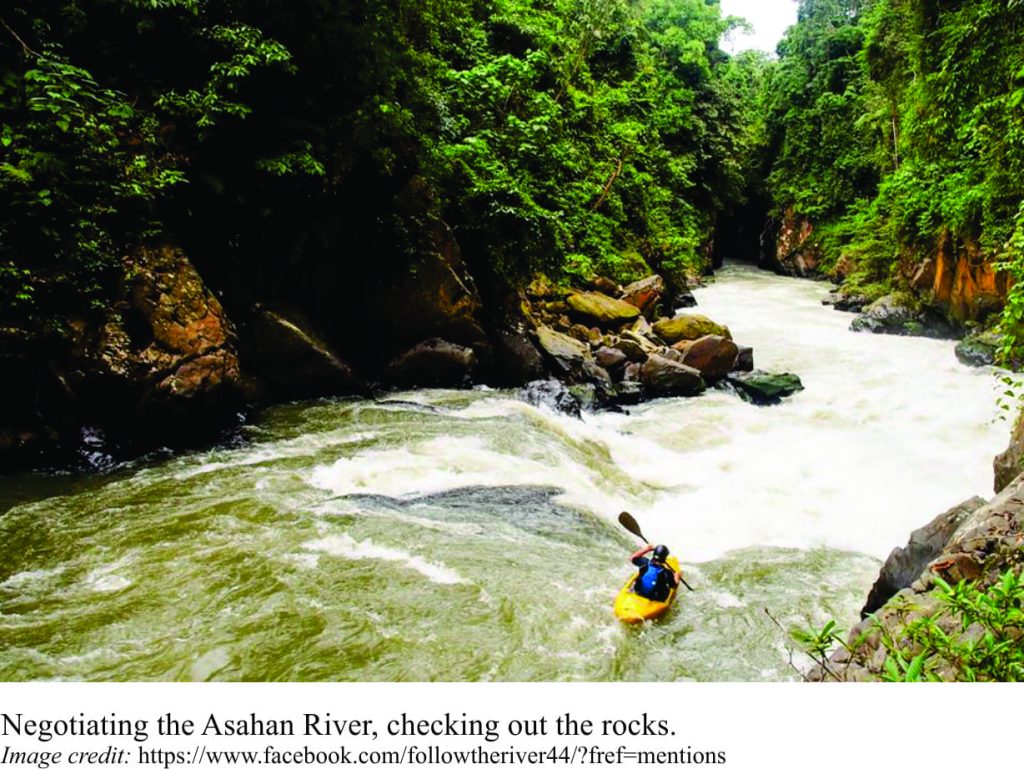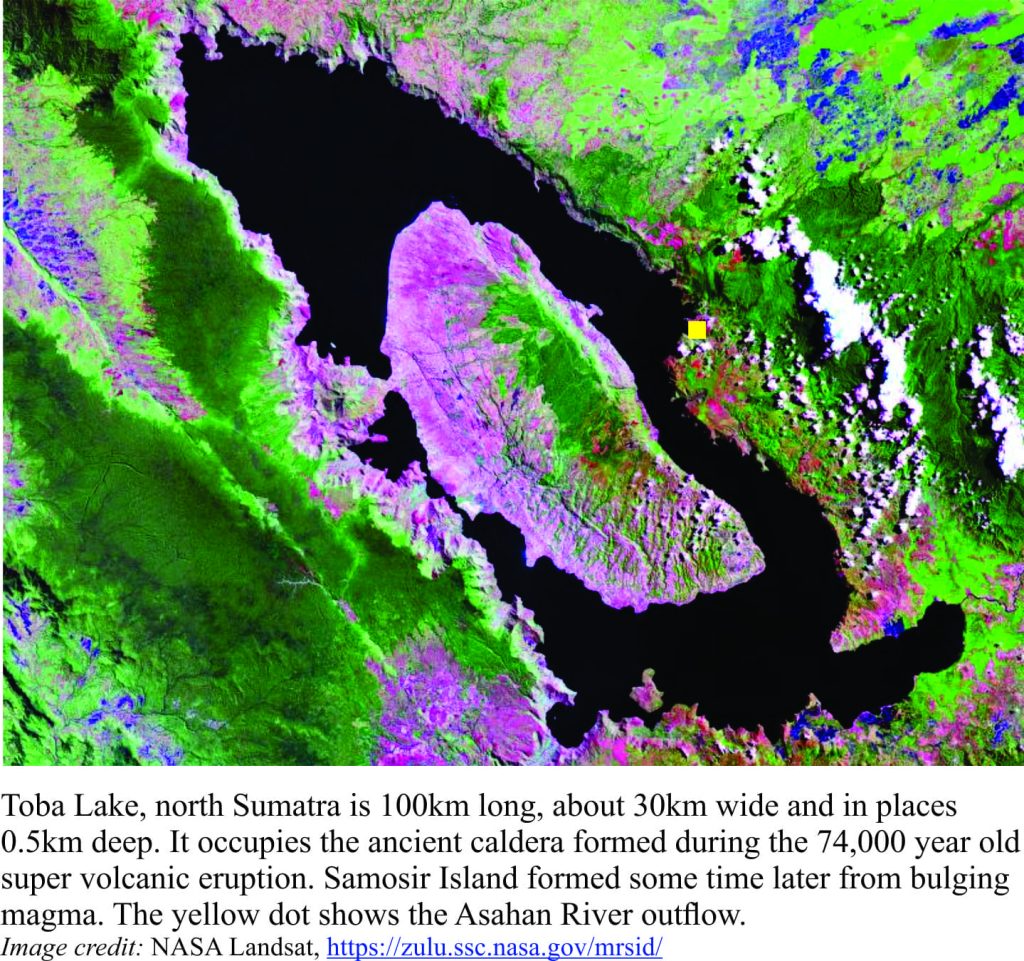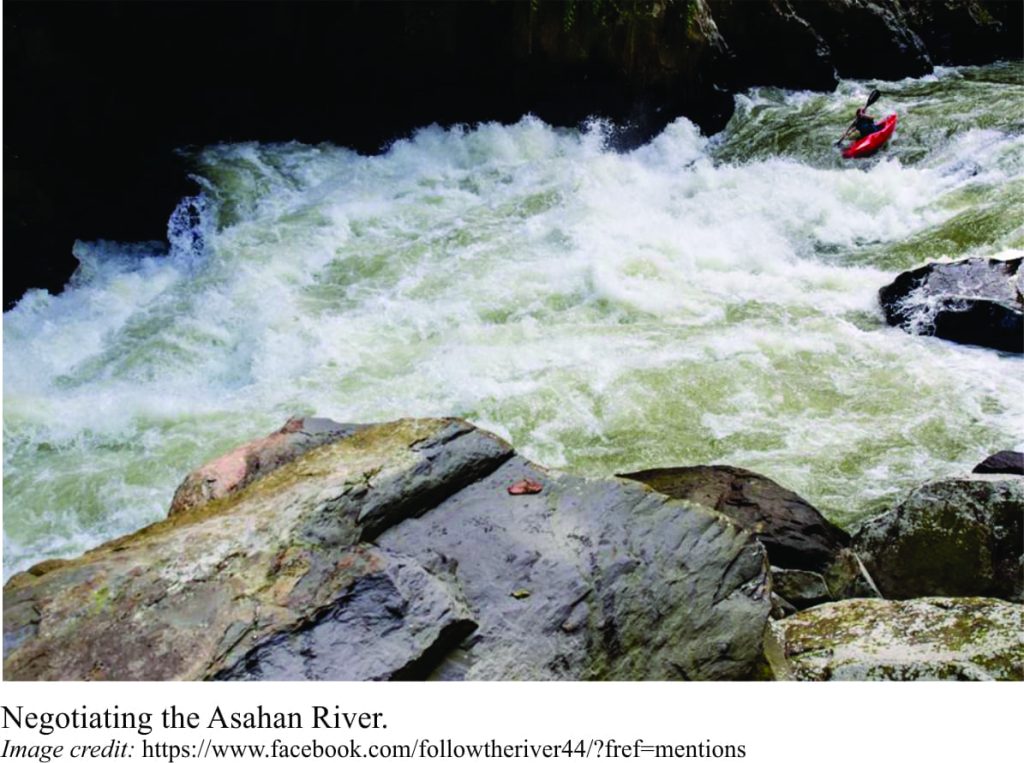Toba Lake, in northern Sumatra, occupies the ancient Toba caldera. One of its outlets, the Asahan River, is the site of some spectacular white-water, a kayaker’s delight. For anyone willing to run the river, spare a thought for your early human ancestors, who it seems, were lucky to survive the aftermath of a cataclysmic super volcanic eruption 74,000 years ago. Be thankful that they did.
The big OE, was something of a post-high school, post-university ritual for my generation (post-WW2). There seemed to be some innate need to ‘get away’, to stretch, if not break familial ties, to establish a foothold on some distant shore. I wonder if there is some genetic predisposition to do this? Our early ancestors seem to have shown a similar degree of impatience with the status quo, and not content to hangout in Africa, decided about 80,000 years ago, out of curiosity or need, to pursue their own OE. The world at that time, particularly the northern hemisphere, was in the middle of a glaciation, with ice sheets developing in northern Europe and North America. One consequence of this climatic event, important in the context of human migration, was that sea levels were significantly lower than present levels; at the time of the Late Glacial Maximum about 20,000 years ago, they were up to 120m lower! Exposed continental shelves and land bridges provided these folk with access to places that, under other circumstances, they would require swimming lessons. Thus we had modern humans appearing on the Indonesian Peninsula about 74,000 years ago, and Australia by 65,000 years ago.
Like travellers everywhere, early Homo sapiens would have contended with the vagaries of weather, wild animals, the uncertainty of food supply, and perhaps, disagreements about which direction to take. What they would not have expected was the eruption of a super volcano and the disastrous consequences of its aftermath.
Super volcanoes produce humungous eruptions, commonly releasing extremely large volumes of ash. Fortunately, they are rare compared with your average eruption; the youngest known took place at Taupo, New Zealand, about 27,000 years ago, with a second eruption there 1800 years ago that released 60-100 cubic kilometres of rock and ash.
The size of the Taupo eruptions pale in comparison with the cataclysmic outburst of Toba caldera, in northern Sumatra, about 74,000 years ago. The volume of volcanic material erupted as ash and (devastating) pyroclastic flows was calculated at 2500 to 3000 cubic kilometres according to early estimates, although recent calculations put this figure at more than 5000 km3. This would be equivalent to covering all USA in half a metre of ash. The Toba eruption is regarded as the largest volcanic event in the last 2 million years. Volcanic ash was distributed over an area of about 40 million square kilometres (land and sea), as far west as India and the Arabian Sea, and east to South China Sea. Turbulent, ground-hugging pyroclastic flows moved rapidly outwards from the caldera, smothering and incinerating everything in their paths.
The eruption column is estimated to have reached about 35km, extending into the stratosphere; this estimate is partly based on direct observations of recent violent eruptions. At a certain height in the atmosphere, the density of the column (ash, water vapour, and aerosols), eventually approximates that of the surrounding atmosphere. At this point, the neutral buoyancy allows lateral spreading of the eruption plume, in what is referred to as an umbrella. Formation of the plume umbrella provides the mechanism for wide dispersal of very fine ash and aerosols. The aerosols, in this case sulphuric acid (H2SO4), chlorine as hydrochloric acid (HCl), and fluoride, may have spread as far as Greenland and Antarctica, based on elevated sulphate concentrations found in ice cores (dated independently, and corresponding to the timing of the Toba eruption).
Volcanic eruptions that send ash and aerosols into the upper atmosphere are known to result in cooling of regional climates; historically recorded examples include the eruptions of Tambora and Krakatoa, that caused several years of bitter winter chills throughout Europe during the 19th century. Although we cannot measure temperatures directly this far back in time (74,000 years), we can use proxies – in this case measurements of oxygen isotopes (16O, and 18O, both of which are natural, stable isotopes) that we know, from experiment and direct observations, have concentrations in ice, water, and shelly or organic material, that are partly dependent on temperature. Measurement of oxygen isotope ratios has been done on ancient deep-sea sediments and ice cores, and the results indicate that average global temperatures may have fallen by up to 3oC, and in some regions by more than 10oC. Analysis of ancient pollen also indicates that large swaths of India and Southeast Asia were deforested. Rain acidity may also have increased because of the aerosols. The aftermath of the Toba eruption was chilling, to say the least. A volcanic winter.
The timing of the Toba event could not have been worse from the perspective of human migration. Some of the earliest migration routes out of Africa, took these ancestral travellers through India and thence to southeast Asia. Stone tools, thought to be of human origin, occur in Sumatran deposits buried by Toba volcanic ash, which means they are at least as old as 74,000 years. Whether these folk survived the eruption is unknown.
The aftermath of the Toba eruption has been blamed for almost extinguishing the fledgling human race, and causing something of a bottleneck in migration where the population was drastically reduced. There is good evidence for regional, and probably global cooling following on the heels of the Toba eruption, and this, it is argued, played a significant role in environmental degradation. Nevertheless, our species (and other animal groups) did survive in places like the Indian subcontinent, despite significant environmental changes. In fact, there is evidence from East Africa (Malawi) that the cooling effects of the eruption had little influence on the region where our human adventures began, and that the causal link between the decline in population and the Toba eruption may not be as clear cut as once thought.
Of course, human populations did eventually recover. Migration continued over many 1000s of years, into northern Europe, Asia, and eventually to North America via the Bering land-bridge. It is a beguiling thought that we almost didn’t make it as a species, that our time may have been cut short by the Toba super volcano. However intriguing this possibility might be, it does seem that the scientific jury is still out.




















